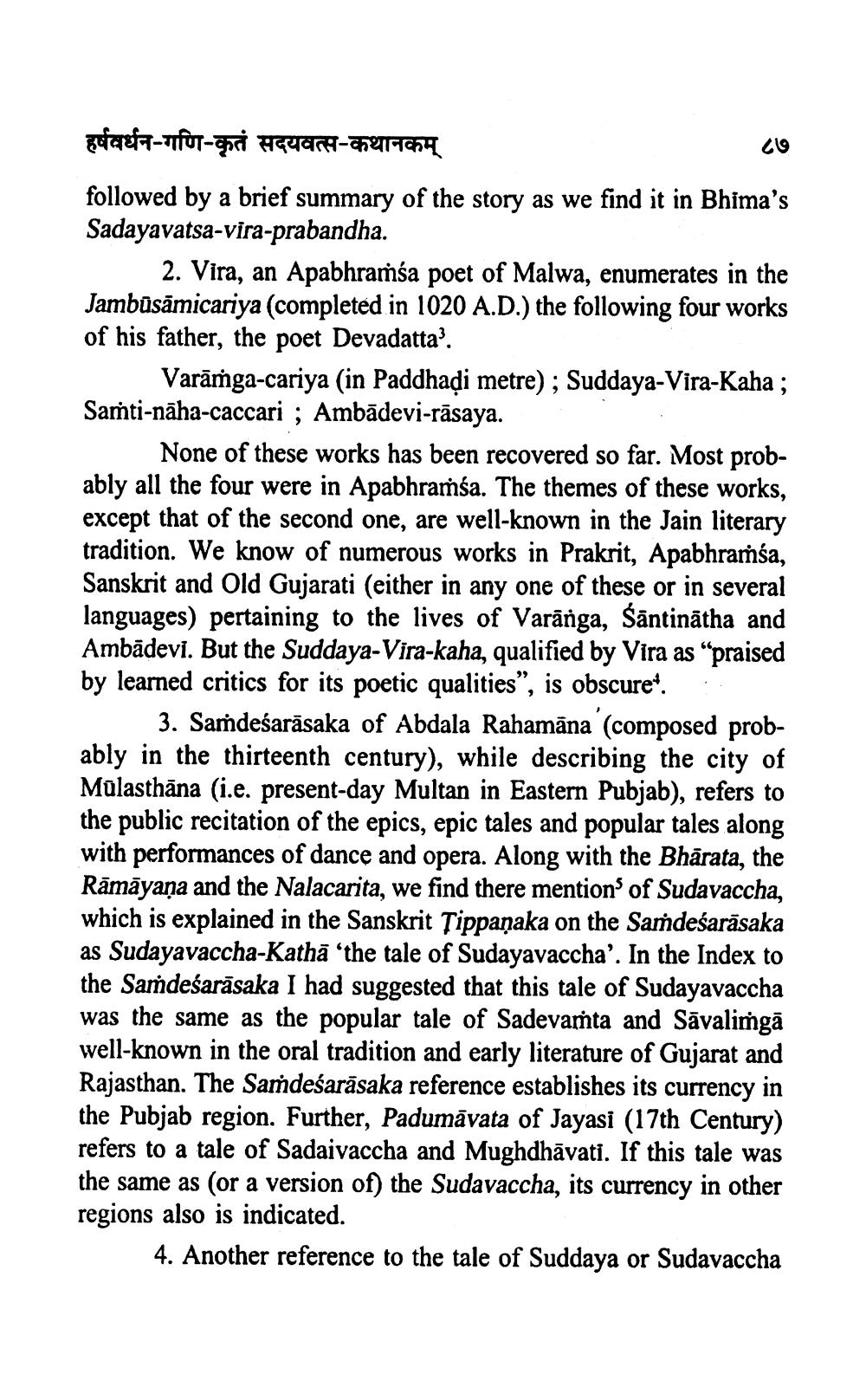________________
हर्षवर्धन-गणि-कृतं सदयवत्स-कथानकम्
660 followed by a brief summary of the story as we find it in Bhima's Sadayavatsa-vira-prabandha.
2. Vira, an Apabhramsa poet of Malwa, enumerates in the Jambūsāmicariya (completed in 1020 A.D.) the following four works of his father, the poet Devadatta?.
Varāmga-cariya (in Paddhaời metre) ; Suddaya-Vira-Kaha ; Samti-nāha-caccari ; Ambādevi-rāsaya.
None of these works has been recovered so far. Most probably all the four were in Apabhramśa. The themes of these works, except that of the second one, are well-known in the Jain literary tradition. We know of numerous works in Prakrit, Apabhramsa, Sanskrit and Old Gujarati (either in any one of these or in several languages) pertaining to the lives of Varārga, śāntinātha and Ambādevi. But the Suddaya-Vira-kaha, qualified by Vira as "praised by learned critics for its poetic qualities”, is obscure*.
3. Samdeśarāsaka of Abdala Rahamāna (composed probably in the thirteenth century), while describing the city of Mülasthāna (i.e. present-day Multan in Eastern Pubjab), refers to the public recitation of the epics, epic tales and popular tales along with performances of dance and opera. Along with the Bhārata, the Rāmāyana and the Nalacarita, we find there mention of Sudavaccha, which is explained in the Sanskrit Tippaņaka on the Sardeśarāsaka as Sudayavaccha-Kathā 'the tale of Sudayavaccha'. In the Index to the Samdeśarāsaka I had suggested that this tale of Sudayavaccha was the same as the popular tale of Sadevasta and Sāvalimgā well-known in the oral tradition and early literature of Gujarat and Rajasthan. The Saṁdeśarāsaka reference establishes its currency in the Pubjab region. Further, Padumāvata of Jayasi (17th Century) refers to a tale of Sadaivaccha and Mughdhāvati. If this tale was the same as (or a version of) the Sudavaccha, its currency in other regions also is indicated.
4. Another reference to the tale of Suddaya or Sudavaccha




